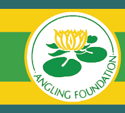CONFUSION is rife in the tackle trade after a kitemark for nets was introduced by the Angling Foundation. A number of people understand that the nets are part of some additional new environmental regulation that has been instigated. Tackle & Guns has also heard stories about sales agents allegedly telling retailers that they must buy kitemarked nets as they will be the only ones permitted – we are happy to dispel these assumptions. One of the people behind the scheme, Roy Marlow, a key member of the Premier Fisheries group, was quick to correct the situation. “You do not need a kitemark to fish at my fishery, providing the net used is fish friendly. What we are attempting to do with this mark is take out any confusion when an angler buys a net hoping to be able to use it. Buying a net with the kitemark will guarantee that it can be used anywhere, but I have to stress that these nets are not the only ones that are environmentally friendly to the fish.” Calling the situation a ‘complete shambles’ David Middleton, boss of Middy International, one of the country’s leading net suppliers said: “I was staggered when I opened my January issue of Tackle & Guns and saw a poster with a letter extolling the virtues of this kitemark and basically giving the impression that all other nets on the market are likely to be made ‘redundant’. “I’ve had phone calls from retailers saying they can’t sell my nets now and my agents have been getting grief – it’s a total fiasco and has done the trade no good at all. And, to compound the whole situation, I understand that not one net with a kitemark is even available in the country.” David is also concerned about the signals a kitemark gives to certain anti-angling groups. “The last thing I want is for some crackpot scientist to start looking too closely at our industry. I’m all for fish welfare and conservation, but where is the scientific proof that these nets – which tend to be polyester – are better than monofilament? There really is no absolute proof either way, apart from that fact they feel softer. What about the slime factor? We are told slime is good for fish, yet these ‘soft’ nets take more off! Think of it logically, what is to stop some idiot claiming all nets are harmful to fish, where will the industry be then?” Although worried about a potential backlash from the trade over his views, he is defiant. “The important thing for retailers to remember is that this is not a new law. Nets have to meet the Environment Agency’s bylaws, which all ours do. Now if a few fisheries want to bring in their own regulations that is entirely up to them, but retailers and anglers should remember these fisheries add up to less than 80, which is a fraction of the number available in the country. “I’m also concerned as to the make-up of this whole thing. For a start I have never been invited to submit any of my nets and, besides, why should I send in a new design when there is a competitor of mine on the accreditation panel? “The whole thing is a dog’s breakfast, with retailers not knowing what they can or cannot sell, suppliers with stocks of nets which retailers are now afraid to buy and a divided industry – what good is that for anyone?” One of the early supporters of the scheme is Keenets whose chief executive Gerry Metcalfe told us: “We spoke to many retailers at the Tackle & Guns Trade Show and informed them that new fish friendly nets would be available in 2003 and, as far as we are concerned, nothing has changed. We have invested heavily in new netting and we see it long term as good for angling and good for the industry.” Certainly the launch of the kitemark appears to have taken a number of people in the trade by surprise, so much so that it has forced the Angling Foundation into issuing a statement to the angling press and certain suppliers – it reads: At a recent meeting of its Nets Accreditation Group, The Angling Foundation formally tested the first batch of nets and allied products submitted by its members. Five companies submitted a total of 32 products for testing, and 27 of these were approved because they met the guidelines on unabrasive, ‘fish-friendly’ mesh and complied with Environment Agency bylaws on nets and other fish-retention equipment. During the next few months many of these items will start appearing on retailers’ shelves, each carrying the foundation’s distinctive, water lily logo and unique approval number. This label provides an immediately visible means of identifying nets that have been tested and have met the fish conservation standards. To accompany this process, the Angling Foundation has distributed posters to all angling retailers, fisheries and other interested parties to raise the awareness of the foundation’s work and demonstrate the differences between approved and non-approved nets. The scheme is entirely voluntary, and anglers who currently use soft-meshed nets should not experience problems in using them at fisheries across the country. However those anglers with harsh or rough-meshed nets may find that they are prevented from using them at certain fisheries, particularly at those controlled by the Commercial Coarse Fisheries Association and by members of Premier Fisheries. Anglers in doubt about the acceptability of their nets at their normal fishing venues are advised to contact their fishery directly. Those anglers that are considering purchasing a new net should check whether their fishery will require the use of an approved net in the future or whether the fishery is happy to allow suitable nets, irrespective of whether they are approved by the Angling Foundation or not. Further companies are already in the process of submitting products for testing. The outcome of the tests is confidential to each company, but products that gain approval are listed on the Foundation’s website (www.anglingfoundation.com). Tackle and Guns






